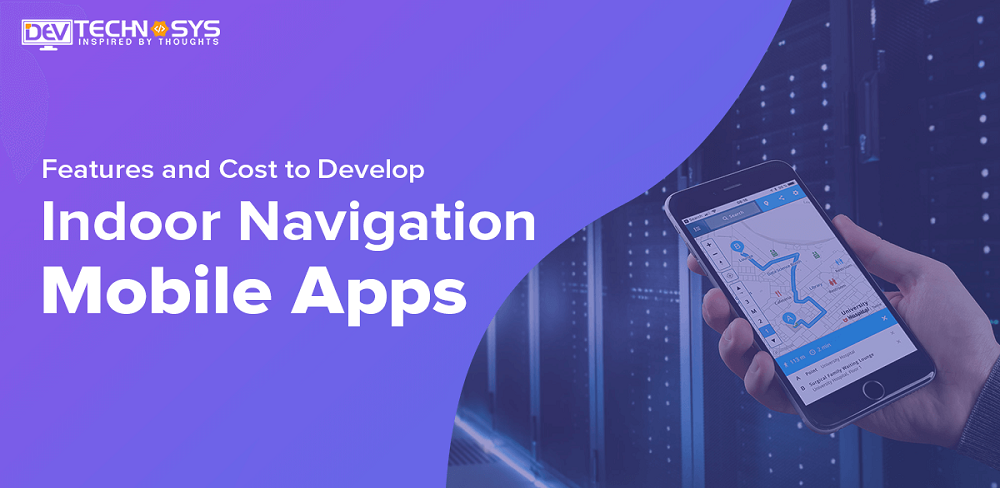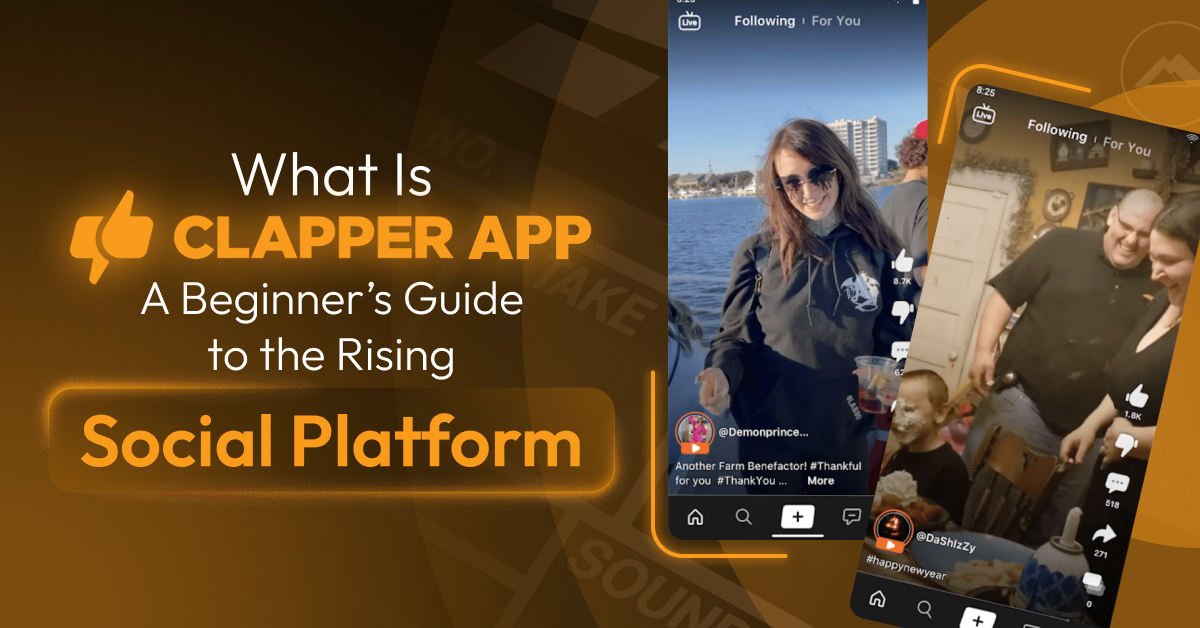“Unlocking Seamless Navigation: Features & Affordable Development for Mobile Apps”
Imagine a world in which finding your way around vast shopping malls, airports, and labyrinthine office complexes is effortless and enjoyable. This comprehensive guide will explore the latest features that make Indoor navigation apps essential in today’s fast-paced world.
Discover the power of intelligent routing algorithms and real-time tracking to navigate users with pinpoint accuracy through complex indoor environments. Learn how technologies such as Bluetooth Low Energy beacons (BLE), Wi-Fi triangulation and augmented reality integration can revolutionize indoor navigation.
We also understand that budgets are important when it comes to app development. In our cost analysis section, we will break down all the factors affecting mobile indoor navigation app development. We’ll give you valuable insight into everything from platform compatibility to feature complexity to help you plan and budget for your next innovative project.
We invite you to join us as we take a fascinating journey through the world of Indoor navigation apps and uncover the secrets behind their features and costs. Prepare to navigate the world one step at a time!
What is an Indoor Navigation App?
A smartphone application called an indoor navigation app is made to help users navigate and find their way through huge indoor locations. It makes use of sensors, Wi-Fi, Bluetooth, and other technologies to deliver precise positioning and location-based services.

Indoor navigation apps provide users with step-by-step directions to assist them get to their preferred locations and provide interactive maps of interior spaces like malls, airports, museums, and hospitals.
Indoor navigation apps have features like accessibility data, real-time updates, sites of interest, and search capabilities. Apps for indoor navigation make it easier for users to manoeuvre around complicated indoor spaces by removing confusion, saving time, and increasing efficiency.
How Do These Indoor Navigation Apps Work?
These indoor navigation apps use complex mathematical algorithms to calculate indoor positioning by utilizing internal sensors in your smartphone. It then intelligently combines the incoming data from sensors to calculate your device’s accurate positioning and avoid any latency. This indoor navigation system relies on three key elements to deliver accurate results and an enjoyable user experience.
- Platform underlying dynamic positioning system
- Beacons transmitting signals from a smartphone
- Signals to the positioning system
These three elements are used to collect and combine data from various sources and calculate the user’s exact position. For an indoor navigation app’s functionality to be optimal, it must have a set of unique functionalities, which we will cover in the next section. Let’s first understand the value of an indoor navigation system.
Market Stats To Look At!

- The indoor navigation market is expected to reach a value of $41.13 billion by 2026, growing at a compound annual growth rate (CAGR) of 32.4% from 2021 to 2026.
- In 2020, the global indoor location-based services market was valued at $8.01 billion.
- Despite being the default programme that comes pre-installed on Android handsets, Google Maps was the most downloaded map and navigation app in the United States in 2022. Waze was in second place with 9.12 million downloads during the study period.
- The number of indoor navigation mobile app downloads is projected to reach 6.2 billion by 2023.
- Retail and commercial buildings account for the largest market share in the indoor navigation industry, followed by healthcare and hospitality sectors.
- In 2021, North America held the largest market share for indoor navigation solutions, followed by Europe and the Asia-Pacific region.
- The adoption of indoor navigation technology is driven by factors such as the need for efficient navigation in large indoor spaces, increasing smartphone penetration, and rising demand for location-based services.
- Future indoor navigation apps are anticipated to make extensive use of augmented reality (AR) and virtual reality (VR) technologies to improve user experiences.
- The COVID-19 pandemic has further accelerated the adoption of indoor navigation apps, as businesses and organizations focus on providing contactless and efficient navigation solutions within their premises.
- Indoor navigation apps are also being integrated with other smart building technologies such as Internet of Things (IoT) devices and sensors to provide enhanced navigation experiences and gather data for analytics.
- Key players in the indoor navigation market include companies like Google LLC, Apple Inc., Microsoft Corporation, Cisco Systems Inc., and Qualcomm Technologies Inc., among others.
Used Cases For Indoor Navigation
An indoor navigation app holds value across diverse industries and sectors. Here are a few examples of industries that can benefit from its implementation:
Industry |
Benefits |
Retail |
Empower shoppers to effortlessly locate stores and products in expansive retail spaces. |
Healthcare |
Facilitate seamless navigation for patients, visitors, and staff within healthcare facilities such as hospitals and clinics. |
Transportation |
Ensure that passengers receive professional direction to help them arrive at their preferred locations inside transportation hubs including airports, train stations, and bus terminals. |
Hospitality |
Assist visitors in finding amenities and facilities within hotels, resorts, and conference centers. |
Education |
Help students, faculty, and visitors locate classrooms, libraries, and various facilities within educational campuses. |
Museums/Galleries |
Elevate the visitor experience in museums and galleries through the provision of guidance and information. |
Corporate Offices |
Assist employees and visitors in locating offices, meeting rooms, and communal spaces within office buildings. |
Exhibition Centers |
Provide guidance to attendees at trade shows, conventions, or exhibitions in finding exhibitor booths and seminar rooms. |
Entertainment Venues |
Help guests at stadiums, arenas, or amusement parks locate seating, food areas, restrooms, and attractions. |
Government Buildings |
Assist citizens in navigating government offices or municipal buildings to access services or specific departments. |
Indoor Navigation Apps Must Have Features
What, in your opinion, makes an app more interactive? Many things can make an app interactive, including the speed of loading, the intuitive interface, accessibility, etc. The functionalities that your app offers users are crucial to its success. Indoor navigation apps must have certain features.

1. Tracking
Different algorithms, protocols and positioning schemes can be used to determine the exact location of a user’s device from on demand app development for navigation.
2. Mapping
App publishers can use mapping to help users find the fastest route to their destination. The app’s visualization feature gives a good idea of the number of people within the same infrastructure.
3. Navigation
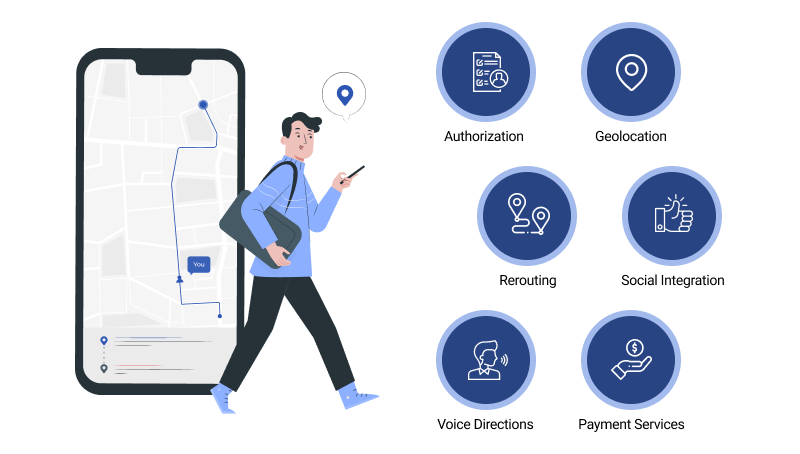
What is the use of a location tracking application without an app navigation function? Indoor navigation applications must have seamless and easy navigation. They show the user the fastest route and the shortest distance. It can also show the distance and time between the user’s origin and destination.
4. Monitoring
Monitoring is another advanced feature that allows users to get important insights, including how many people enter or leave the building, its current strength, etc.
5. Easy App Login
People don’t like to enter all their details when creating a new account. They prefer to use their social media account to log into the app so they can access it immediately. This feature can be added to indoor navigation apps to make sign-in easier and more convenient for users.
6. Push Notifications
Your indoor navigation project can include push notifications. The app can guide users to their desired destination by displaying pop-up messages.
7. Administrative Functions
Geolocation app development administrators can be given additional features to help with marketing and advertising. This feature allows them to integrate and maintain beacons to develop marketing tactics for business requirements.
Read More: What is The Cost of Geolocation App Development?
8. Voice Control
These features are very useful in an age where customers expect everything to be at their fingertips. By integrating voice control into your navigation app, your customers can use their voice commands to find the exact location of any building.
9. 3D Map Projections
AR/VR technology can make your app interactive and engaging. The map is represented in 3-D, making it more intuitive and real. Hiring professional AR/VR development services can easily add this feature.
1o. Customized Design
You can customize your app’s UI design based on the building structure. It gives users a more personalized experience when using your app since the points and positions on the map are customized and accurate according to their location.
How To Create an Indoor Navigation App?
Are you looking to learn how to make indoor navigation apps? Now you shouldn’t. In this section we have covered everything that will help you know the steps of developing an indoor navigation application to ensure successful implementation. It is a brief overview of the steps that go into developing an indoor navigation application:
1. Define the Requirements
Define the features and functions of your indoor navigation app development. Identify your target audience and the platforms they use (iOS or Android). You’ll also want to consider the indoor environment you will target.
2. Map Data Acquisition
Get the map data you need for the space that you are targeting. You can use floor plans, architectural diagrams, or other relevant information.
3. Selecting The Right Positioning Technology
Select the right positioning technology to track indoors. Wi-Fi, Bluetooth Low Energy (BLE), Beacons, or any combination. Select the technology that best suits your needs.
4. Data Preparation & Integration
Prepare the map data acquired and integrate it into the chosen positioning technology. Aligning the map with the positioning system is the first step in this process.
5. User Interface Design
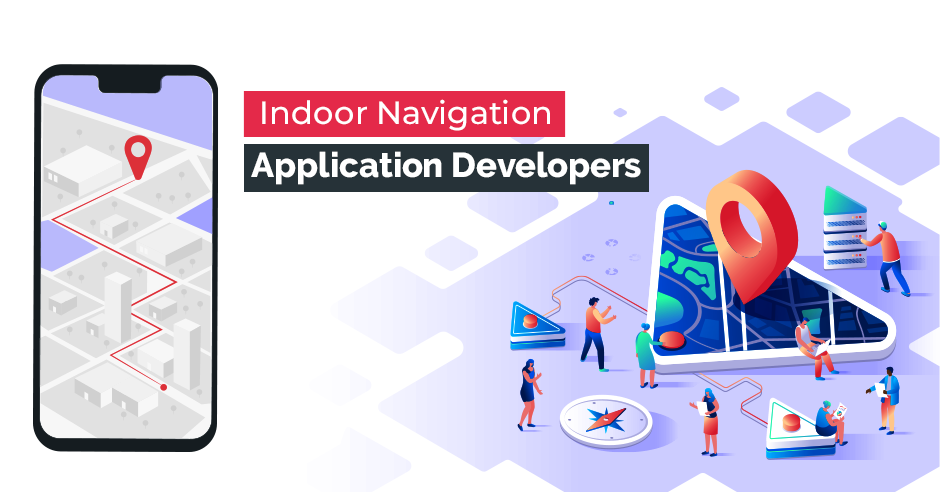
Create an intuitive, user-friendly interface. Think about the route display, map visualization, search function, and other features you intend to include.
6. Navigation Algorithm Development
Create algorithms that calculate routes and provide navigational instructions. Consider factors such as the shortest route, accessibility and user preferences.
7. Backend Development
Build the backend infrastructure for the app, including server-side Map data, user profiles and other information that can be stored in components, APIs and data storage.
Read More: Best Location Tracking Apps
8. Frontend Development
Implement the frontend components of the app, such as the map, the user interface, the search function, and the navigation. It usually involves programming in the appropriate languages (e.g., Swift for iOS, Java/Kotlin on Android).
9. Test and Debugging
Test the app thoroughly to ensure it works smoothly and has accurate positioning and navigation. Test the app both in a controlled indoor environment and as a unit.
10. Deployment & Maintenance
The software may be distributed through additional channels or published on the relevant app store (such as the Apple software Store or Google Play Store). Update and maintain the app frequently to handle security issues, fix problems, and add new features.
What Are The Advantages of Creating Indoor Navigation Apps For Users And Businesses?

1. Benefits Of Indoor Navigation App Development For Users
- Navigation Made Simple And Easy
The indoor navigation app uses live location data and specific search features to help users quickly find the best routes to their destinations. The app will guide them to their destination, making it easier for users to move around in new buildings.
- Verbal Instructions
The app’s voice assist feature makes finding the fastest route much easier. Users can navigate by listening to instructions without looking at their devices.
- How to Make the Most of Your Time
Indoor navigation apps based on artificial intelligence help people navigate large interior spaces quickly and easily. The indoor navigation web app will help them find their way without asking for directions or wandering aimlessly.
- Enhancement of the User Interface
Indoor navigation software makes it easy to navigate large interior areas. The users can relax and have fun without worrying about getting lost in large interior spaces.
2. Benefits of Indoor Navigation Apps For Companies
- Client Satisfaction is Improved
Visitors to large establishments such as airports, theme parks, and malls can benefit from indoor navigation apps. These apps make it easy for visitors to locate certain services and amenities within the building. It increases their comfort and enjoyment.
- Productivity and Efficiency
Businesses with multiple locations can benefit from apps that allow people to navigate the building. Customers can quickly get to where they want to go, saving time and maximizing their day.
- Advertising and Marketing For Target Audience
Businesses can learn a lot about the habits and preferences of their customers by using indoor navigation apps. This information can increase customer retention by sending personalized and relevant marketing communications.
- Resource Efficiency
If a team of mobile app development services develops an indoor navigation app, it can learn more about the use of its facilities. This data can be used to optimize resource allocation and avoid bottlenecks and congestion.
How Much Does It Cost To Create An Indoor Navigation App Development?
The business needs of the app largely determine the cost of creating an indoor navigation application. A rough estimate can be made based on features, functionality, the location of the company developing the app, the number of platforms it will run on, etc.
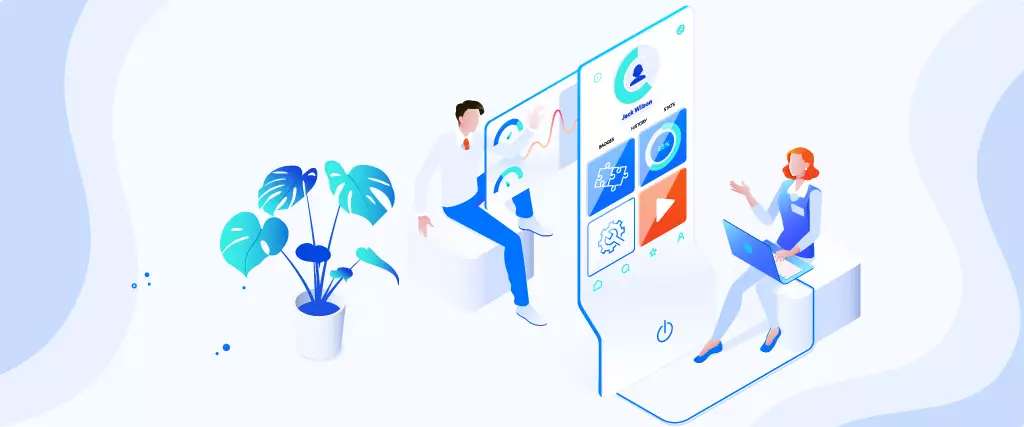
Developing indoor navigation systems can be expensive when advanced technologies and features are integrated. Calculating them all, an indoor navigation app could cost between $8000 and $30000.
However, creating a fully-fledged application with advanced technology and integrated features might cost anywhere from $10,000 to $40,000.
What Are the Major Factors That Affect The Cost Of Development For The Indoor Navigation Apps?
Cost to develop a location-based app is affected by many factors, including the functionality of the app, its features, the size of the app, the platform it is built on, and even the mobile app development companies that you hire. There is no online calculator for the cost of an indoor navigation app. Each project has its requirements and requires different skills.

We will now go into detail and examine each factor contributing to the app development cost.
1. App Platform
The app development cost depends on the platform you choose to launch your application. When you’re a startup with a limited budget, it is best to stick to one platform, such as Android/iOS Native Apps. Once you succeed with this platform, you can move on to another. You can opt for cross-platform applications targeting Android and iOS platforms with one app if you’re an enterprise.
2. UX/UI Design
Ensure that your app is well-designed and attractive, with all the necessary features. While hiring an Android app design company may be more expensive, with best practices, you can attract many customers and save money on other things.
3. App Size and Complexity
Costs for hiring a GPS tracking software development company depend on the complexity of your app and how many features you want to include. You need an app developer from India to create an app similar to Google Indoor Maps. They can customize it with the latest features and attract new users.
4. App Development Team
App development costs are determined by the developer’s expertise, experience and location. In India, developing a navigation app like waze is cheaper. You will need the following members on your team if you decide to hire an iOS app development company:
- Project Manager
- UX/UI Designer
- Android App Developer
- iOS App developer
- Backend Developer
- Quality Assurance Engineers
App Development Services in India start at $10 – $25 per hour, depending on the web app development company skills and experience. The price of developing an application will vary depending on the tools and techniques you use.
In A Nutshell!
In conclusion, developing indoor navigation mobile apps offers numerous benefits, including improved user experience and increased customer satisfaction. However, it’s important to consider the features required for such apps, such as mapping, location tracking, and navigation algorithms.
Additionally, the cost of developing indoor navigation apps can vary depending on factors like complexity, platform compatibility, and integration with existing systems. Investing in these apps can be a valuable asset for businesses looking to enhance navigation capabilities within indoor spaces.
Frequently Asked Questions
